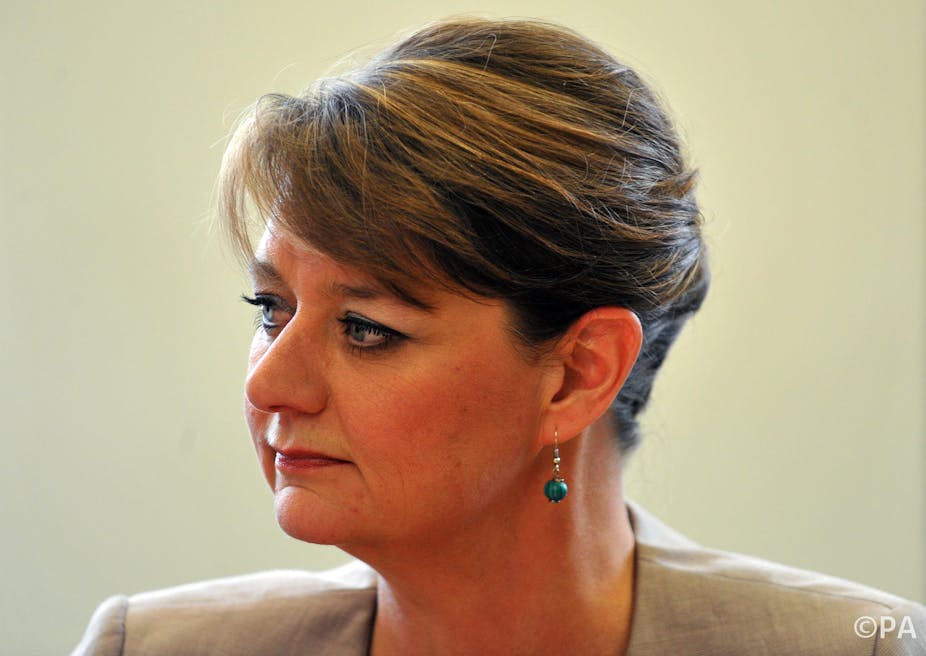The nationalist agenda has sprung to the fore in UK politics over the past few years – largely due to Scotland’s referendum in 2014 putting independence firmly on the agenda. Both the Scottish National Party (SNP) and Plaid Cymru in Wales have been thrown into the spotlight as never before.
But with a general election looming, it is more important than ever that voters do not regard Plaid Cymru and the SNP as two sides of the same coin. Both Plaid and the SNP support independence within the EU for their nations (albeit on different timescales and less overtly in the case of the former). But the truth is that Plaid Cymru is substantially different to the SNP.
For much of its history, Plaid has limped along as a marginal party in a marginal part of the UK. Wales’ proximity to a larger country with a stronger economic base and better public service infrastructure (by virtue of geography and demography) has meant that Welsh citizens often draw their health and transport services – as well as their employment – from England.
Careful what you wish for
In 1997, Wales voted in favour of devolution by a wafer-thin margin of 0.6%. Then along came the National Assembly and democratic devolution. There were some incredible initial highs for Plaid. In the first devolved elections in 1999, the party performed better than the SNP did in Scotland, in terms of vote share. The party won 17 seats and scored an average vote share of just under 30% overall. Those results were peppered with some jaw-dropping swings from Labour in its valley heartlands such as the Rhondda and Islwyn.
But that’s where the good news stops. Since the first elections, Plaid Cymru has been on a pretty consistently downward trajectory – so much so, that maintaining its electoral status quo is now likely to be deemed a success. We saw as much in the European elections last year, when the party was mightily relieved its national share of 15% was just enough to hang on to its sole MEP Jill Evans.
There have been some green shoots of recovery in local and by-elections, but these have been largely quashed by a Welsh Labour party thriving on local resistance to the UK coalition government. Welsh Labour and Scottish Labour are chalk and cheese; the former has embraced devolution, guided by two Welsh-speaking, Wales-identifying first ministers – Rhodri Morgan and Carwyn Jones – who have successfully muscled in on some of the “soft” nationalist territory that Plaid might have otherwise dominated.
A new face

Leanne Wood was elected party leader in March 2012 – it is fair to say that since then she has forced some to revisit their conceptions of the party. Wood is the party’s first female leader, and the first to be non Welsh-speaking.
More significantly, she is a product of the south Wales valleys, a feminist, a socialist and a republican. Wood was excluded from the National Assembly chamber for referring to the Queen as “Mrs Windsor” and then refusing to withdraw her remarks.
For all the excitement and energy surrounding her profile, the sobering truth is that Wood has been unable to budge a poor electoral showing for Plaid Cymru, dating back to the second term after devolution. Despite some recent boosts to her public recognition and popularity in the polls, the jury is out on Wood until she can deliver some electoral advances for the party.
Plaid’s credibility problem
The biggest dilemma Plaid now faces is the one that has plagued its modern history: the perennial issue of whether it is a pressure group agitating on the sidelines or a credible party of government. This problem is compounded by the fact that Plaid’s only record of being in government – from 2007 to 2011 as part of the One Wales coalition with Labour – was a mixed experience.
Plaid won the 2011 referendum on legislative powers, which was an important stepping stone. But the issue was so byzantine and complex that most of the general public were completely perplexed by it, and so gave little credit or return to Plaid in electoral terms. Plaid emerged from the following elections as the third-largest party in the assembly (behind the Conservatives) with 11 seats.
2016: the real test
As it approaches the next electoral test in fewer than 100 days time, polls put Plaid on 11%. This is likely to translate into the party holding its three seats, largely due to the geographical concentration of its electoral support. Yet even this outcome is uncertain, as two of the three require swings of only 3% to 4.6% to fall to Labour. Even if Plaid holds onto its seats, this would mean minimal change in support since the pre-devolution 1990s.
Of course, the real test for the party is not in three months’ time: Plaid needs to be positioned to form part of a new Welsh government, following the assembly election in May 2016. This will require absolute clarity of purpose, and involve shedding the last remnants of its campaigning, agitating history. And it won’t be easy, with polls predicting the first return of UKIP and Green Assembly Members to Cardiff Bay, squeezing Plaid’s position as the “alternative” to Labour.
If Plaid is to emerge from the dark, it will need three things: influence, clear desire to win power and a decisive strategy. To do that, it requires a better profile in south Wales, and an internal acceptance that being a political party is all about winning power and using it effectively.

